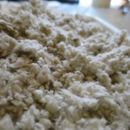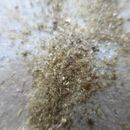Sand like substance in loose-fill fiberglass?
Hi all.
This is an asbestos question. I know these can be tricky to navigate on a forum. But my question is hopefully specific enough.
I have an old house (circa 1910’s) with retrofitted blown-in fiberglass loose-fill in the walls. Not sure when it was blown, but possibly in the 90’s. It’s definitely not vermiculite.
Anyways, I’ve pulled some out of the walls and noticed that a pile of what looks like sand accumulates under the pile. I found this concerning. Does anyone have experience with a sand like substance being present in loose-fill fiberglass?
I know sending in a sample is the only sure way (and I will likely do that) but I want to have some idea of experiences with this.
GBA Detail Library
A collection of one thousand construction details organized by climate and house part











Replies
I should also note I am calling this fiberglass, but I'm not positive on that really. I'm not versed or experienced with insulation ID. Not familiar with what loose rockwool looks like, for example.
Are you sure it’s not just old sawdust? I’ve seen sawdust in insulation lots of times. Leftovers from construction, or “new” sawdust from carpentry work that was done after the insulation went in.
The other possibility is debris brought in by little critters over time. It’s hard to say from a pic. Only a lab test will tell you for sure.
Bill
I'm not sure, though up close it has a round, almost translucent quality. Like tiny amber beads.
It did come from near the bottom of the wall, so is likely concentrated in comparison to the rest of the wall.
There was also other animal sign (droppings).
I'll send it in I suppose. I was mainly wondering if these small sandy type particles are commonplace with loose-fill fiberglass, or some other product that would be obvious.
Little amber beads sounds like hardened sap. Sometimes pine will weep a little and you end up with little hard sap blobs. It’s very much like the “amber” that you see used as a gemstone, just not petrified. I’ve usually seen the sap basically glued to the wood, but I supposed it could have fallen off over time or been disturbed by construction work and then fallen off.
Bill
Thanks Bill.
I actually had that epiphany before coming back on here while pulling some boards. A knotty board had some dry resin stuck to it that displayed likeness to the beads and triggered the thought. That you came to the same thought is reassuring.
It is interesting that there would be so much of it and in such small round granules. I picture a scenario where the boards 'sweated' the sap/resin, which then dropped into the cavity and mixed with the insulation.
Tyler,
The easiest way to tell what it is is to taste it. Not you of course, but maybe some annoying kid down the street?
Try burning a small amount. If it is sap it will smell as expected.
Having some experience in a very different industry that deals with nasty things, I would advise against using any of your senses (smell, taste, etc.) for test equipment of anything you believe may be hazardous. Using your body as test equipment can be dangerous!
Little critters like mice can carry all kinds of nasty diseases too, so be careful. If you believe there is any chance you have some potentially hazardous materials in your wall, using a regular test lab is your safest bet if you want to be sure what you’re dealing with.
Bill
Does the interior wall material happen to be plaster and lathe? If so it's probably just sand coming off the plaster keys
Alright it's settled then, I'll mix some into my morning oatmeal and see if I pine for more.
Spenceday, yes it is plaster and lathe, and now that you say it, it seems obvious that'd be what (at least some of it) is. Though some of the little granules really do have a translucent amber color that looks awfully similar to the pine resin. I'll have to get out the jewelers loupe.
I did get insulation and plaster tested in another part of the house previously, but I didn't recall seeing this substance, perhaps because I was up on the second floor at the time.
Thanks all.